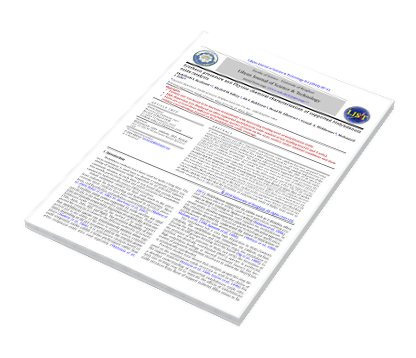Synthesis procedure and Physico-chemical characterization of supported Molybdenum oxide catalysts
DOI:
https://doi.org/10.37376/ljst.v8i1.2174Keywords:
Molybdenum oxide catalysts; XRD; Particle size, Ex-Situ FT-IR and Laser Raman SpectroscopyAbstract
A series of alumina and silica supported molybdenum oxide catalysts has been prepared using ammonium heptamolybdate over a wide range of loading levels (3 – 20 wt% of molybdenum oxide) by the wet impregnating method. For a better understanding of the catalytic behaviour of the catalysts, the catalysts were characterised using different techniques like, XRD, FT-IR spectroscopy and Laser Raman spectroscopy. The XRD results of alumina supported molybdenum oxide exhibits the crystallinity of catalysts and particle size was found to increase with increasing the loading level of molybdenum oxide. The similar effect was observed in case of sulfated alumina supported molybdenum oxide (xMoAlS). However the XRD results in case of silica supported molybdenum oxide exhibits high dispersion at low loading level (3 and 5 wt%). The FT-IR results revealed that the dispersion capacity of molybdenum oxide from MoAlS is larger than of molybdenum oxide from MoAl. However, the ex-situ FT-IR spectra of MoSi and MoSiS catalysts showed that the dispersion capacity of molybdenum oxide from MoSiS is bigger than of molybdenum oxide from MoSi. Laser Raman spectroscopy studies demonstrated that there are at least three different molybdenum oxide species (tetrahedral and octahedral coordinated surface species as well as a crystalline MoO3 phase) present on the Al2O3 surface under ambient conditions and that their relative concentrations depend on the molybdenum oxide coverage. Laser Raman Spectroscopy of xMoAl catalysts indicated that the formation of molybdenum oxide of higher bond order in xMoAlS catalysts than in xMoAl catalysts.
Downloads










 LJST Copy rights form
LJST Copy rights form


